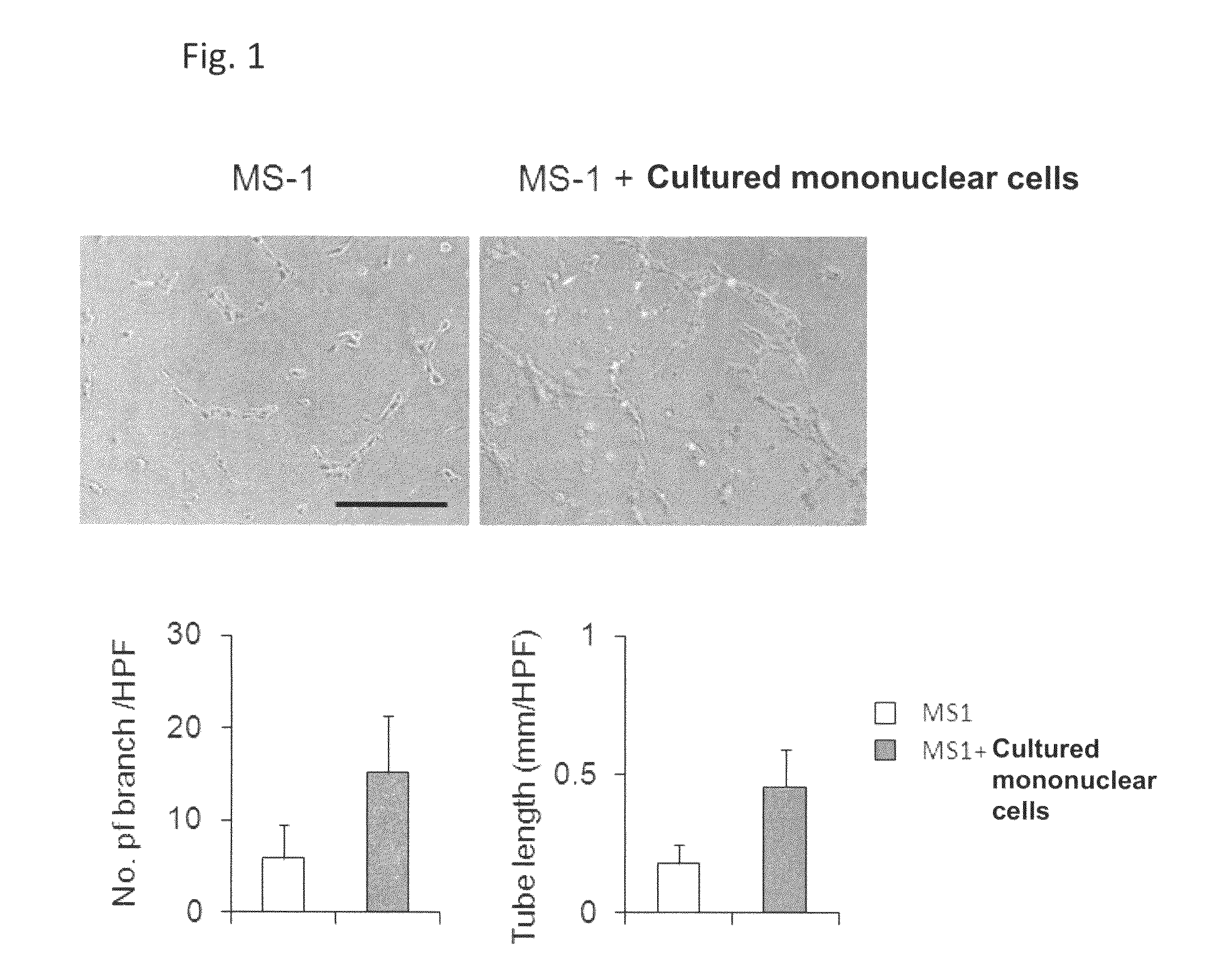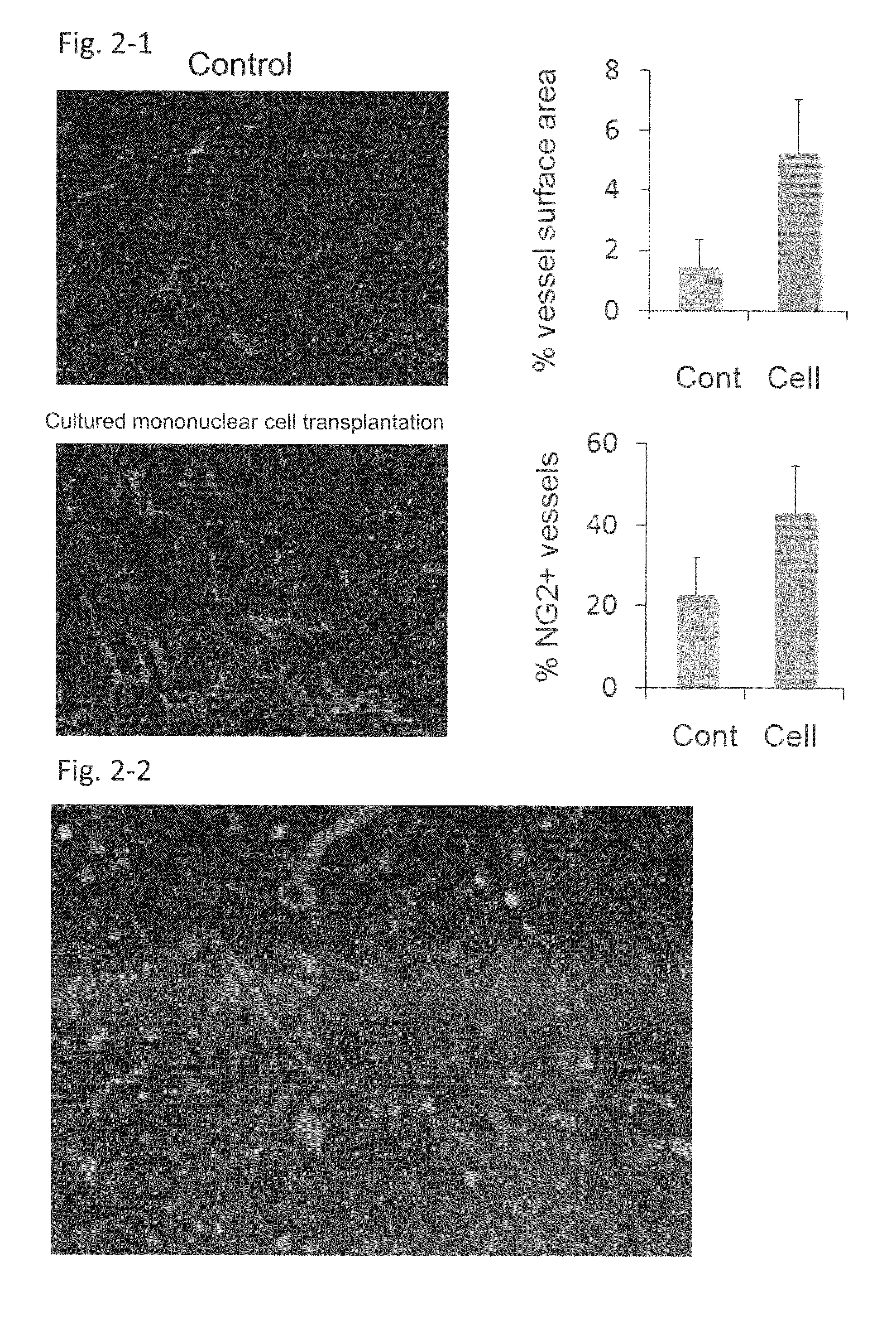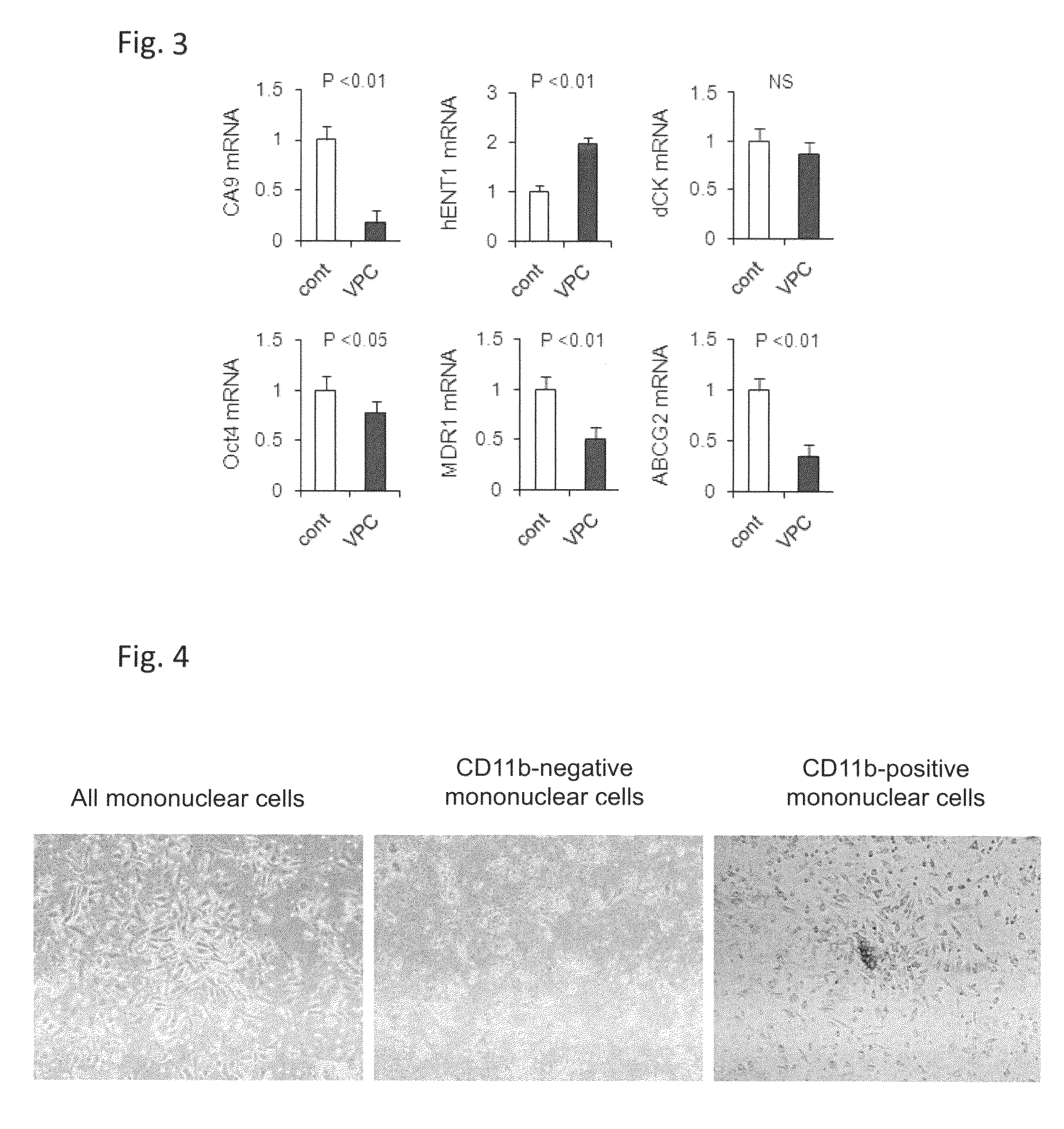Revascularization cells derived from mononuclear cells, and method of inducing differentiation thereof
a revascularization cell and mononuclear cell technology, applied in cell culture active agents, cardiovascular disorders, drug compositions, etc., can solve the problems of a large number of cells not being able to reproduce, a long way to the realization, and a small number of subcultured cells from pavement-shaped colonization, etc., to achieve no risk of infection, promote lumen formation, and collect peripheral blood relatively easily
- Summary
- Abstract
- Description
- Claims
- Application Information
AI Technical Summary
Benefits of technology
Problems solved by technology
Method used
Image
Examples
example 1
Induction of Differentiation of Mouse Mononuclear Cells in EGM2-MV Medium
[0135]From mouse bone marrow, the mononuclear cells were prepared as follows. Mouse thighbone etc. were crushed by using a mortar and DPBSE (PBS containing EDTA at the concentration of 5 mM), and bone marrow fluid was collected. The collected bone marrow fluid was filtrated using a membrane filter of 70 μm diameter to collect bone marrow cell suspension. The cells were suspended in 10 ml of DPBSE. This suspension was gently overlayed on 4 ml of Histopaque 1083 (Sigma) in a 15 ml centrifugal tube. After separating this mixture by density gradient centrifugation (400 g at room temperature for 20 minutes), cells layered in the middle were collected with pipette to isolate bone marrow mononuclear cells (BM-MNC).
[0136]The obtained mouse bone marrow mononuclear cells were cultured with inducing differentiation for one week in EGM2-MV medium supplemented with 10% FBS in a temperature sensitive culture dish treated wit...
example 2
Induction of Differentiation of CD11b Positive-Fraction of Mouse Mononuclear Cells
[0147]Mononuclear cells were prepared from mouse bone marrow similar to Example 1. Next, a CD11b-positive fraction is prepared from the obtained mouse bone marrow mononuclear cells using immunomagnetic beads (Miltenyi Biotec.) on which a CD11b antibody is immobilized.
(1)
[0148]Among cells in the CD11b-positive fraction, adherent cells in spindle shape similar to all mononuclear cells were observed. On the other hand, cells in similar shape were scarce when the CD11b-negative fraction was used (FIG. 4). From this, cells in spindle shape seen in the early stage of culturing are considered to be of monocyte origin.
(2)
[0149]When cells in the CD11b-positive fraction were cultured for three weeks in EGM2-MV medium supplemented with 10% FBS in a culture dish treated with rat vitronectin, the expansion and enlargement of cells were seen, but the cells showed no tendency of proliferation. Thus, CD11b-positive ce...
example 3
Induction of Differentiation of Human Mononuclear Cells Under Various Conditions
[0152]20 mL of DPBSE was added to 30 mL of peripheral blood obtained from a healthy volunteer. Baffy court was collected by spinning it at 400×g, 20° C., for 35 minutes. It was resuspended into 20 mL of DPBSE, then separated by density gradient centrifugation (400 g at room temperature for 20 minutes) using Histopaque 1077 (Sigma). Mononuclear cells were isolated by collecting cells layered in the middle with pipette, and cultured in EBM-2 supplemented with EGM2-MV medium kit for microvascular endothelial cell medium (Lonza) on a plate coated with human fibronectin for 4-0.7 days to obtain adherent cells.
(1)
[0153]Human peripheral blood mononuclear cells were cultured with inducing differentiation in EGM2-MV medium supplemented with 10% FBS in culture dish treated with human fibronectin. It was confirmed that cells keep round-to-spindle shape well for about one week of culture period, when cultured for ab...
PUM
| Property | Measurement | Unit |
|---|---|---|
| concentration | aaaaa | aaaaa |
| temperature | aaaaa | aaaaa |
| diameter | aaaaa | aaaaa |
Abstract
Description
Claims
Application Information
 Login to View More
Login to View More - R&D
- Intellectual Property
- Life Sciences
- Materials
- Tech Scout
- Unparalleled Data Quality
- Higher Quality Content
- 60% Fewer Hallucinations
Browse by: Latest US Patents, China's latest patents, Technical Efficacy Thesaurus, Application Domain, Technology Topic, Popular Technical Reports.
© 2025 PatSnap. All rights reserved.Legal|Privacy policy|Modern Slavery Act Transparency Statement|Sitemap|About US| Contact US: help@patsnap.com



